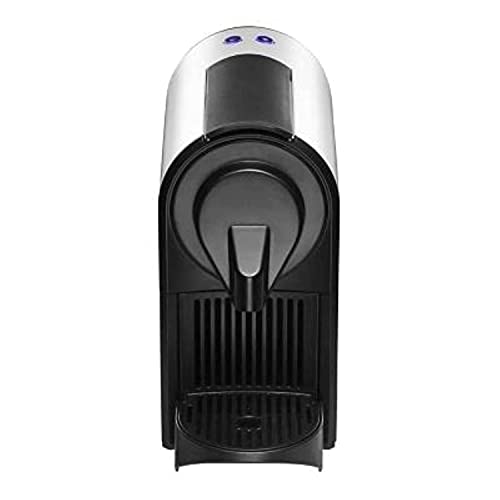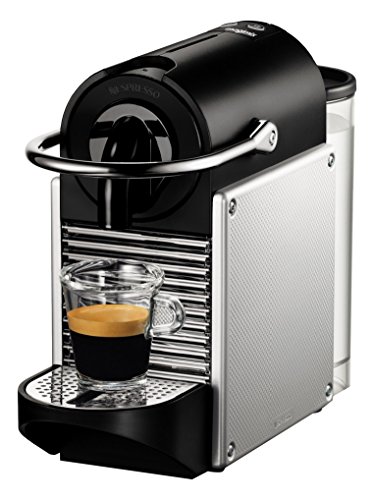The Most Hilarious Complaints We've Heard About Nespresso Coffeee Mach…
작성일 24-06-30 14:25
페이지 정보
작성자Humberto Hopman 조회 16회 댓글 0건본문
 Nespresso Coffee - The Essenza Mini
Nespresso Coffee - The Essenza MiniThe Essenza Mini is compact and affordable. It's also easy to use. It doesn't come with a drip tray that can be removed or a water tank to keep it compact. But, it produces excellent espresso and lungo.
It works by piercing capsules and pumping hot water under pressure to create different espresso and coffee sizes, including the 1.35-ounce espresso, 2.7-ounce double espresso, 5-ounce gran lungo, and 14-ounce alto. It can be used with an independent milk frother.
Capsules
With the Nespresso system you can brew a cup of coffee with the press of the button. You can choose a single-serving size or a larger cup, and each capsule comes with the appropriate amount of ground beans to meet your preferred strength. You can also add some milk powder to make a cappuccino, latte macchiato, or other drinks. The capsules can be reused or disposed of without guilt because they are made from biodegradable material.
The pods are made of aluminum and can stand up to the pressure of the machine. The pods are sealed with a hermetically sealed seal, and the coffee grounds inside remain fresh and safe from oxygen and moisture. In addition, the aluminium is 100% recyclable and is in line with Nestle's environmental goals.
The system has its own disadvantages. The machines are expensive both to purchase and to operate. The capsules are also costly to purchase and have to be replaced regularly. The machines can only be used with capsules made by Nespresso. This has led to a variety of lawsuits between Nestle and third-party firms, that use the same extraction method and ingredients as Nespresso.
Despite these drawbacks, the nespresso U machine System is not without advantages. These include top-quality coffee and environmental sustainability. It's a great alternative to regular coffee and tea bags, and it has an extraction rate that is higher than other single-serve systems. In reality, a single capsule can produce up to 14 ounces of espresso-style coffee.
The original capsule was developed in 1976, and patented in 1978. Its key features include an cone of aluminum foil and a flat top that has an elongated recess that the machine injects hot water, and a small opening in the base, which is punctured both above and below. The machine then spins the capsule at 7000 rpm, which infuses the coffee with water and produce the thicker crema.
Water
When you use a Nespresso machine, it is essential to have Shop High-Quality Nespresso Coffee Machines Online water. This is essential to ensure consistency, as well as the flavor and texture. In general, you should choose water that has been "filtered" or "spring," and avoid tap or distillate water.
In our lab tests, we've found that Nespresso machines with top-quality softened water produce more enjoyable espressos and lungos than machines that use hard water. This is because the hard water creates calcium deposits and other issues that affect the taste of your coffee.
Each time you drink a cup in each cup, the Nespresso coffee machine pumps out hot water under high pressure. This process is referred to as extraction. The duration, temperature, and pressure of the extraction process are what determines the flavor and strength of your coffee.
The original machines break the capsule and then push it, while the Vertuo model scans the barcodes to determine the amount of water needed for each espresso. The Vertuo models can make six different sizes of drinks including lungos and espressos, with or without caps of foam.
All machines in the Nespresso line produce 19 bars. Some of the more expensive machines can also make latte macchiatos as well as cappuccinos, while others offer the option to make an Iced Coffee.
Inissia machines and U-series machines are compact making it easy to put them into small spaces. The Nespresso Pixie is another compact option, with a built-in milk frother. It can also be integrated with the Nespresso app to access customized recipes and to reorder capsules. Nespresso is a great option for anyone looking to reduce their carbon footprint and help the company's sustainability program.
Temperature
While Nespresso machines are more complex than the average coffee maker, they're also designed for speed and user-friendliness. They operate very quickly and take only about a minute to prepare each capsule. They are also energy efficient. Nespresso machines consume less power than traditional drip coffee makers to make capsules.
Most Nespresso coffeee machine are designed for drinks based on espresso, but some models have milk frothers that can be used to make cappuccinos and lattes. Certain models come with a separate capsule container that can hold up 12 capsules at once. This makes it easy to recycle.
The Nespresso name is backed by a variety of well-known kitchen equipment manufacturers, including Krups DeLonghi and Breville. However, the majority of the machines are manufactured by Eugster/Frismag, a Swiss company that is one of the biggest coffee machine manufacturers in the world. This has led to criticisms of the company's use patents and other strategies similar to those used by printer manufacturers to create lock-ins for vendors.
Pressure
In order to make the best possible espresso you must maintain a consistent pressure throughout the extraction process. This is known as "pressure profiling." Pressure profiling is the process of altering the amount of pressure that is applied to the coffee grounds to ensure a perfect extraction and enhance the flavor. This technique can be achieved by using various espresso machines, including Nespresso coffee makers.
There are a variety of ways espresso machines can manipulate the pressure during extraction. A balanced bypass regulates water pressure at a fixed value, usually 9 bar, regardless of the inlet. This simple and efficient method ensures that the pressure across all the espresso groups is the same throughout the extraction process.
Another method is to manually adjust the pressure using an adjustable knob or lever. This is a more complicated method, but it could offer a higher level of customization and control. Manual pressure regulation may result in inconsistent results. It requires a lot of skill and attention.
Finally, some espresso machines have a dynamic pump that adjusts the pressure based on the temperature of the ground and the type of coffee used. This type of system is more sophisticated however, it can give better results than other models.
Nespresso has a range of machines that can be used to make espresso, lungo drinks and some can also froth the milk. The Nespresso Inissia is a great option for baristas at home because it can make anywhere from seven to nine espressos at a time and comes with a 33-ounce water tank. It also has buttons for different sizes of drinks as well as a capsule tray that holds up to nine used pods. The Nespresso Vertuo Next is designed to be versatile and comes with eleven milk temperatures and eight textures to select from. It also comes with a stainless steel milk frother as well as a container which can hold up to 18 ounces.
Cleaning
Every time you use a Nespresso, it leaves behind limescale and mineral residues. These residues may mix with your coffee, which can cause it to taste unpleasant. To avoid this from happening, it's important to regularly clean your Nespresso machine and its parts. A thorough cleaning should include descaling and washing the removable parts, like the drip tray and capsule container. A daily wash of the capsule container using fresh water will also help to keep mineral buildup out of the capsule.
A de-scaling solution can help eliminate mineral deposits from your machine. You can find these products at most appliance and coffee stores. You can also use vinegar. This abrasive cleaner won't damage your machine but it will take longer to dissolve the minerals than a descaling liquid.
If you decide to use vinegar, you must remove the coffee pods first and empty the reservoir. Then, drain the remaining water in the tank and any water filters built-in. Pour the vinegar in and run the cycle without a pod of coffee so that it can pass through the machine. Then, rinse with clean water and run several more cycles to make sure there is no trace of vinegar left in the machine.
When you've got your machine clean, you can wipe down the exterior and removable parts. Pay special attention to crevices and corners where gunk may hide. You can either wash the parts that are removable using mild soap in your dishwasher, or by hand. Rinse them thoroughly. Check the seals on the capsule as well as the coffee outlet and replace them if they are damaged to ensure their elasticity.

댓글목록
등록된 댓글이 없습니다.